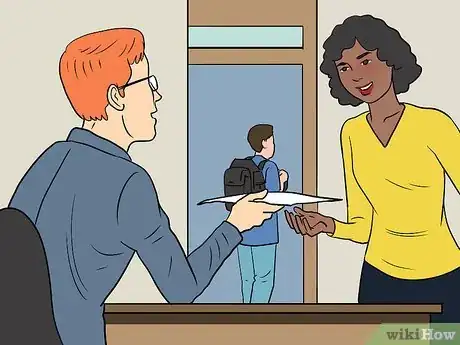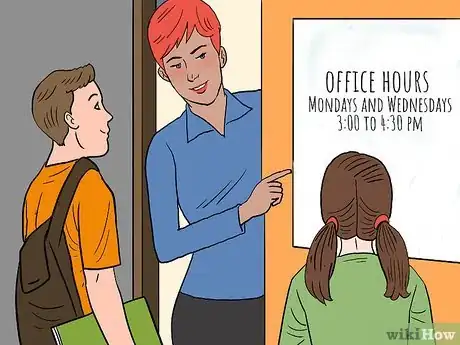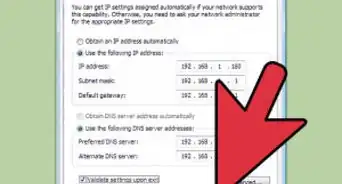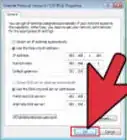This article was co-authored by Ashley Pritchard, MA. Ashley Pritchard is an Academic and School Counselor at Delaware Valley Regional High School in Frenchtown, New Jersey. Ashley has over 3 years of high school, college, and career counseling experience. She has an MA in School Counseling with a specialization in Mental Health from Caldwell University and is certified as an Independent Education Consultant through the University of California, Irvine.
There are 8 references cited in this article, which can be found at the bottom of the page.
This article has been viewed 21,947 times.
Learning barriers can include a wide range of issues from language and literacy to self-confidence and behavior problems. If you have students who are struggling due to learning barriers, you might be looking for strategies to help them. Start by focusing on your teaching pace, clarity of instructions, and availability of resources for students who are struggling. Then, work on getting students to participate more and boosting their self-confidence with praise and feedback. With some time and effort, your students may start to overcome their barriers to learning.
Steps
Overcoming Language and Literacy Barriers
-
1Clarify your expectations early on in the course. It’s important to let students know what you expect of them and how they can succeed in your class. Make your expectations clear by explaining them and putting them into writing. Encourage your students to ask questions if anything is unclear about your policies or expectations.
- Make sure that you respond to questions in a welcoming, pleasant way. Don’t shame students for asking questions.
- Be mindful of cultural references you use to explain things to your students as well. If you have students from other countries in your classroom, cultural references to people or events in your country might not make sense to them, so try to be as inclusive as possible.
-
2Slow down to give students more time to absorb information. If you have students who are struggling to keep up due to language or literacy barriers, slowing down the pace of your lessons may help. Divide what you would normally cover in 1 class into 2 lessons so that you can go at a slower pace. Use more repetition and examples to explain and reinforce the concepts in the lesson.[1]
- For example, you could provide the definition of a key term, then use it in a series of sentences to better explain it. You could also provide a visual representation of the word to help reinforce its meaning for your visual learners.
Advertisement -
3Keep oral and written instructions short and concise. When you assign homework, a paper, or a classroom activity, describe what you want students to do in the simplest possible terms. Provide the instructions orally in the classroom and in written form, such as a handout or email, but make sure that both sets of instructions are the same.[2]
- For example, if you tell students that their next paper will be a story about their summer, focus on the key elements of the paper in your instructions, such as what questions the paper should answer, how long it should be, and any other requirements.
-
4Provide access to a peer or adult note-taker. If you have a student who struggles to take notes during class, find someone who can take notes for them. Photocopy the notes for the student and give them to them after each class to ensure that they will have the information to study later.
- A classmate who takes good notes or a teacher’s aide may be a good choice to serve as the student’s note-taker.
Tip: If there's no one who can serve as a note-taker, you might consider giving the student a copy of your PowerPoint or lecture notes at the end of each class.
-
5Demonstrate tasks for students to give them a visual reference. If students need to do something that requires a physical action, demonstrate this for them. Don’t just describe how to do it or provide written instructions. Some students will not understand unless they see you doing it.
- For example, you might need to demonstrate a specific procedure of a lab experiment or how to change the settings in Microsoft Word.
-
6Encourage study strategies that match students' learning styles. Some students may struggle as a result of their learning styles not matching up with the study practices they are using. Encourage your students to try out different study strategies to help them absorb more of the information in the textbook and in the classroom. Some strategies you might recommend to your students include:
- Highlighting and underlining
- Mind-mapping
- Listening to audio of the lesson (if you allow recordings)
- Making and studying flashcards
-
7Accommodate your students with learning disabilities. If you teach in grade school, any students with disabilities will need to speak with the school counselor to determine what accommodations they are entitled to. If you teach in higher education, any students in your classes who have learning disabilities will need to register with disability support services. The counselor or disability support services office will inform you what accommodations the student is entitled to. These may include:[3]
- Additional time for taking tests.
- The ability to record lectures.
- Additonal assistance with proofreading their work.
- A separate exam location free from distractions.
Encouraging Participation
-
1Send students an introductory email before the course begins. If you’re teaching a class with older students, such as college or high school, sending them an email before the class starts might be a helpful way to get them excited for the course and ready to learn on day 1. Let them know who you are, what the class will cover, and any books or other materials they will need to have on the first day of class.[4]
- You might also request that students send you an introductory email as well to get them engaged right away.
-
2Create a seating chart that considers students’ needs. You may have students who need to sit near the front of the classroom due to hearing or vision problems or because they find it easier to focus when sitting in the front of the room. You might also have students who benefit from sitting next to peers who can model good behavior or note-taking strategies for them. Consider all of your students’ needs when you design your classroom seating chart.
- Keep in mind that you can also allow your students to sit where they want. However, this may impede some students’ learning, such as if they choose to sit in the back of the room when they have trouble concentrating, or if they choose to sit next to students who distract them.
-
3Provide feedback in a timely manner. Grading papers, tests, and other assignments as soon as possible and getting the graded assignment back to the student will help to keep them motivated. If you wait too long to grade papers and other assignments, students may have already made similar mistakes on other assignments by the time they get the assignment back and your feedback may be less helpful to them.[5]
- For example, if a student misunderstood a concept, they might make fewer errors if you get the graded assignment back to them right away and correct the misunderstanding with your feedback.
-
4Make yourself available to students by keeping regular office hours. If a student is struggling, they’ll need to meet with you as soon as possible. Let your students know what days and times you are available for one-on-one conferences and for help on things like homework and papers.[6]
- For example, you might set your office hours to something like Mondays and Wednesdays from 3:00 to 4:30 pm.
Tip: Tell your students what your office hours are in class and by sending out an email or posting on your class’s online forum. If you need to change or cancel office hours for any reason, let your students know.
-
5Remind students of important dates in class and via email. Some students might find it difficult to keep track of all of the different due dates and deadlines in their classes, so it’s important to update them regularly to ensure they don’t forget. Mention the paper, assignment, or test often in class. Send out an email to your students an email about 1 week before the due date and possibly also a second email 1 to 2 days before.[7]
- If you use an online forum, such as Blackboard, you can also post reminders for your students here.
-
6Use social media to promote engagement outside of class. You might consider starting a private Facebook group or using a special Twitter hashtag for your students to share course-related links, ask questions, and comment on lessons. This may help to make thinking about the course material more fun for some of your students.[8]
- You might even encourage students to use social media to engage with course material by offering extra credit. However, if you do offer extra credit in this way, provide an alternative for students who choose not to use social media.
Empowering and Supporting Your Students
-
1Call students by their names. Using your students’ preferred names is a simple, yet valuable way to engage with them in the classroom. Try to learn their names as quickly as possible and say their names whenever you call on them or offer them praise or feedback for something.
- Try having your students make name tags on the first day of class. They can place the name tags on their desks to make it easier for you to learn their names.
- An exception to calling students by their names might be if 1 or more students are being disruptive or doing something they shouldn’t. In this case, it might be better to remind all students of the classroom conduct and rules and avoid singling out one student.
-
2Provide positive reinforcement for staying on task. Make an effort to notice when your students are doing what they were asked to do and praise them for it. This can help your students to feel motivated, keep working, and stay focused.
- For example, you might say, “Nice progress, Joey!” or “Wow, you’re really tearing through those math problems, Gillian!”
Tip: To encourage your students to be more independent, try structuring class time, but allowing students to self-manage. For example, you might provide a list of tasks that students need to complete within a given time frame, but allow the students to decide what order they do them in.
-
3Ask students to identify something they did well after a lesson or assignment. Helping your students learn how to praise themselves will also help them to overcome learning barriers by promoting self-confidence. At the end of each lesson or classroom activity, ask your students to write down a compliment to themselves and hand it in.
- You can provide students with a template for this, such as “Today I am proud of myself for ___.”
- Collect these and write feedback on them to reinforce students’ positive perceptions of themselves. You can also add to their comments with additional things you noticed.
-
4Call students’ parents or guardians when students do something positive. Sometimes mentioning that a student did well to their parent or guardian can help to make them feel even more motivated. Try calling your student’s parent or guardian and saying something like:
- “Carla is doing an outstanding job in my class. She always completes her assignments on time, her papers are well-written, and she seems committed to improving as much as she can. I am very proud of her and I just wanted to let you know how great she is doing.”
-
5Let your students know you are there for them. Sometimes your students may encounter personal difficulties that impede their progress in the classroom. Tell your students that you care about them and that you are available if they ever need someone to talk to. Encourage them to come to you if they’re struggling with any aspect of the class.
- If a student comes to you with a serious personal issue, such as dealing with abuse at home or struggling with depression, refer them to a counselor at your school.
Expert Q&A
-
QuestionWhat should I do if I'm struggling to maintain my grades?
 Ashley Pritchard, MAAshley Pritchard is an Academic and School Counselor at Delaware Valley Regional High School in Frenchtown, New Jersey. Ashley has over 3 years of high school, college, and career counseling experience. She has an MA in School Counseling with a specialization in Mental Health from Caldwell University and is certified as an Independent Education Consultant through the University of California, Irvine.
Ashley Pritchard, MAAshley Pritchard is an Academic and School Counselor at Delaware Valley Regional High School in Frenchtown, New Jersey. Ashley has over 3 years of high school, college, and career counseling experience. She has an MA in School Counseling with a specialization in Mental Health from Caldwell University and is certified as an Independent Education Consultant through the University of California, Irvine.
School Counselor Talk to your teachers. Just be honest and open with them about what you're struggling with. They may be able to make accommodations for you. They could also help you out during lunch or after school. Outside of that, you could find a tutor or talk to your parents about trying to get some help.
Talk to your teachers. Just be honest and open with them about what you're struggling with. They may be able to make accommodations for you. They could also help you out during lunch or after school. Outside of that, you could find a tutor or talk to your parents about trying to get some help.
References
- ↑ https://www.edutopia.org/blog/instructional-pacing-tips-rebecca-alber
- ↑ https://www.wgu.edu/heyteach/article/guide-giving-clear-instructions-students-that-they-will-actually-follow2001.html
- ↑ https://www.washington.edu/doit/academic-accommodations-students-learning-disabilities
- ↑ https://www.cmu.edu/teaching/designteach/teach/firstday.html/
- ↑ https://www.teachthought.com/pedagogy/20-ways-to-provide-effective-feedback-for-learning/
- ↑ https://www.cmu.edu/teaching/designteach/teach/firstday.html
- ↑ https://www.niu.edu/citl/resources/guides/increase-student-engagement-in-online-courses.shtml/
- ↑ https://www.frontiersin.org/articles/10.3389/fpsyg.2022.1005313/full












































































